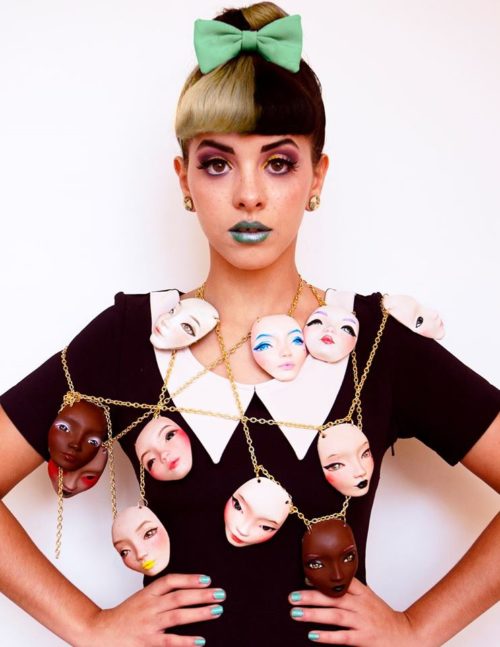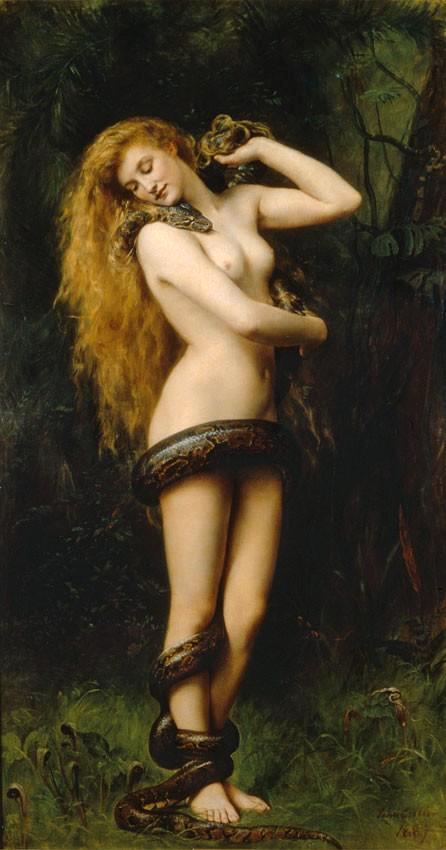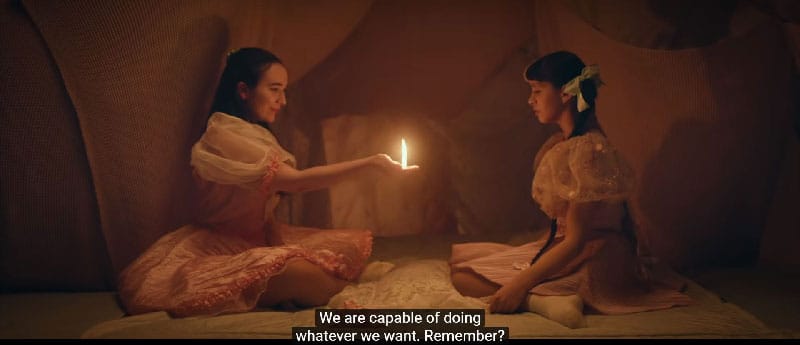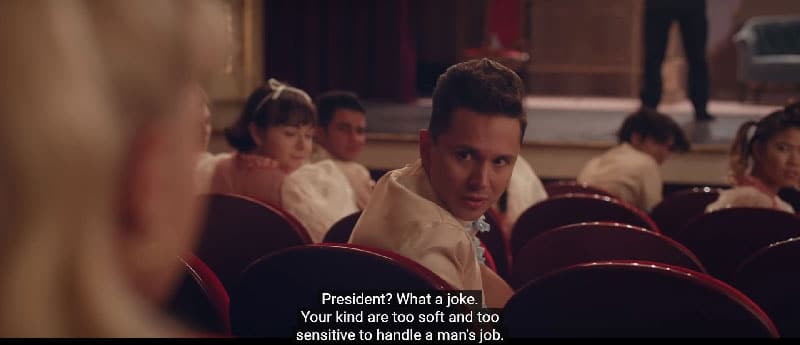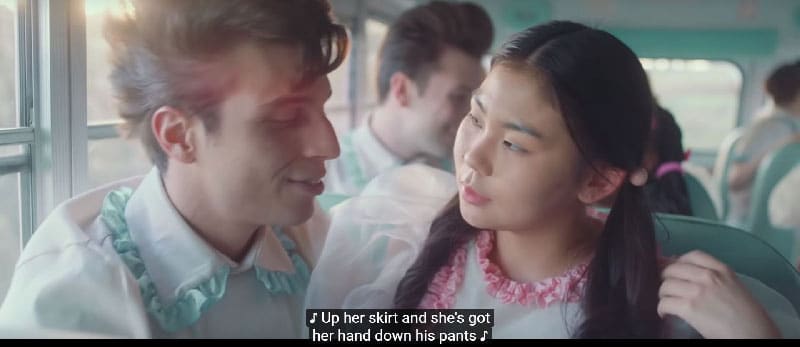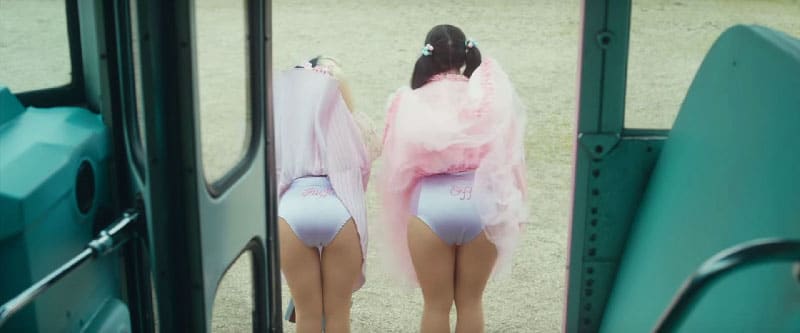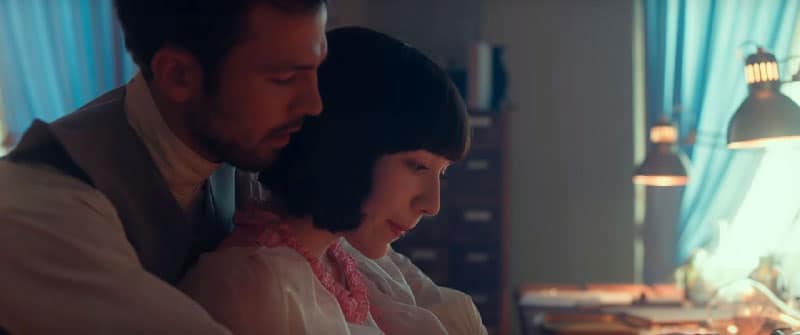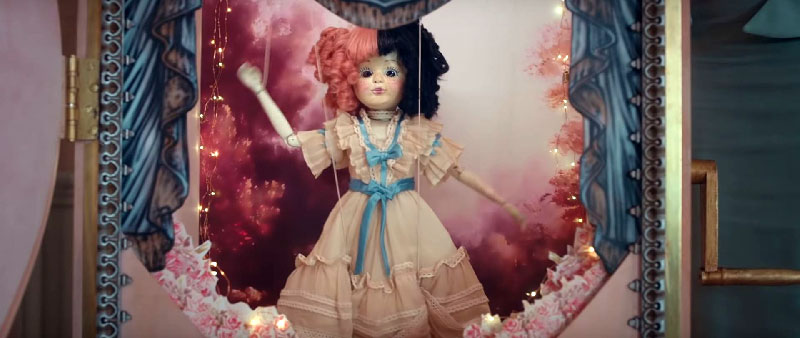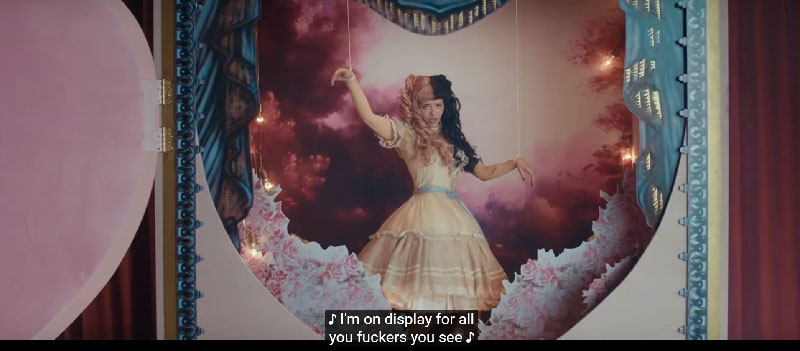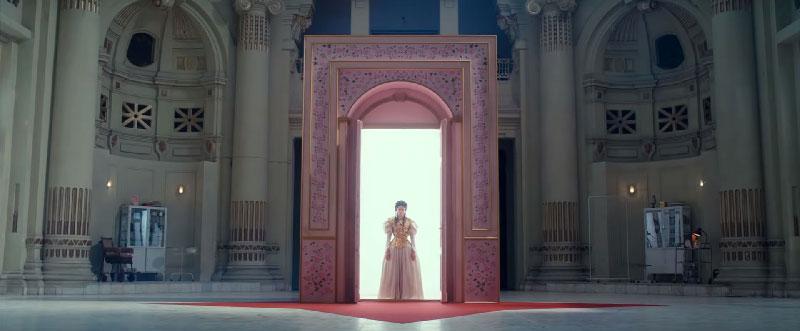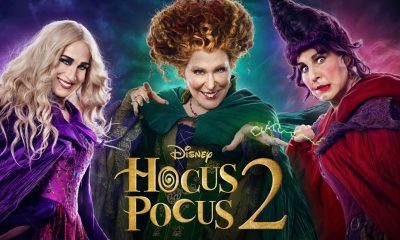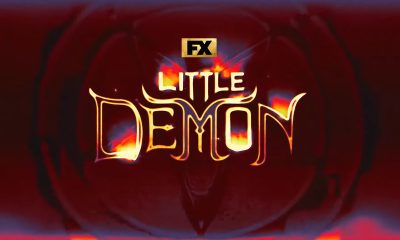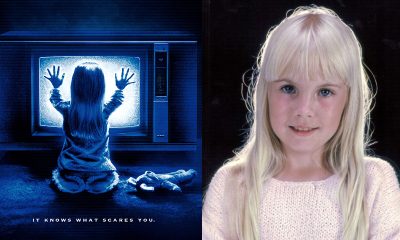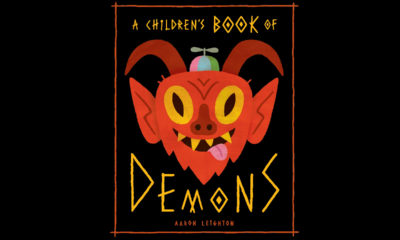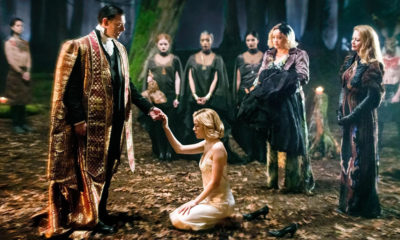Movies and TV
The Sinister Messages of “K-12” by Melanie Martinez
Lauded for its “social messages”, the movie “K-12” starring Melanie Martinez is actually filled with sinister messages emphasized with deep symbolism. Here’s a look at the true meaning of “K-12”.
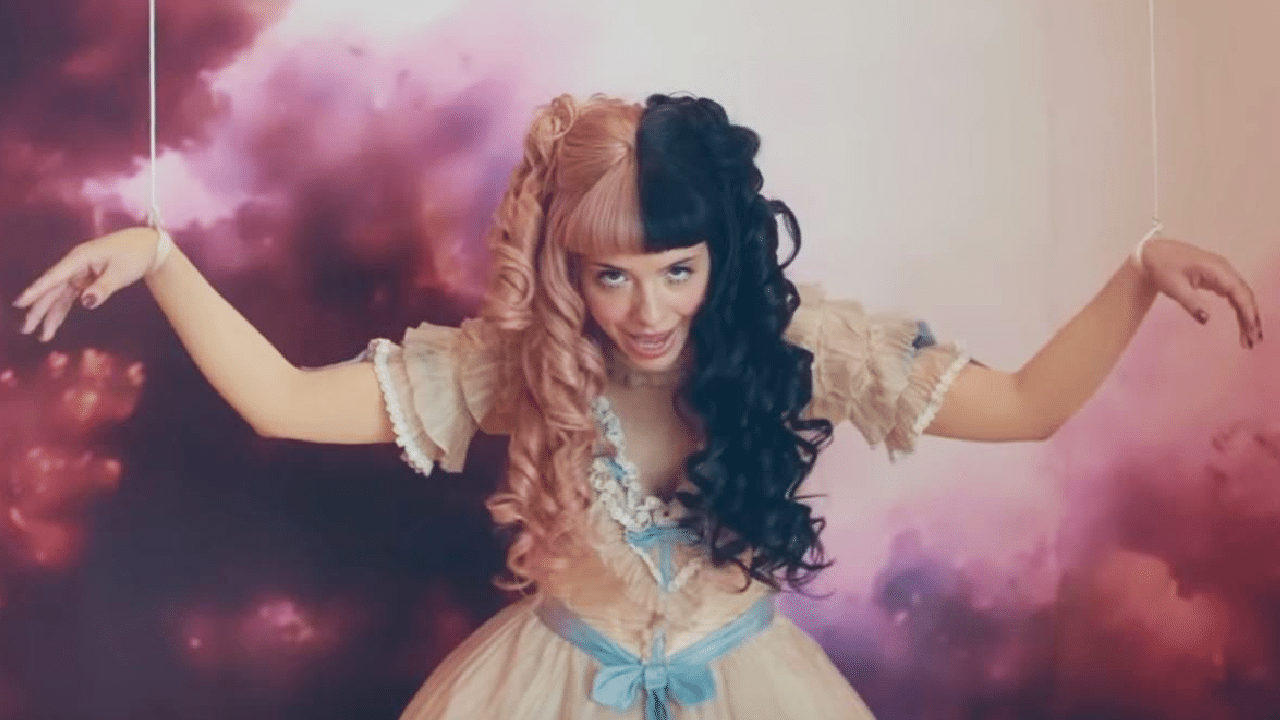
Melanie Martinez was discovered in the music contest show The Voice in 2012. While she was mostly about guitar-driven acoustic music, her sound and image took a different direction after she got signed with Atlantic Records. And it is creeping out lots of people.
Despite the fact that Melanie Martinez is 24 years old, her entire act revolves around over-the-top kiddie stuff. In her videos, Melanie often wears babydoll dresses as she sings songs with titles such as Sippy Cup. However, the subject matter of the songs is nearly always dark and disturbing. Martinez’ first album Cry Baby was described by the singer as being about “a child who experiences adult things”. That doesn’t sound right. And when one takes a closer look at of the contents of that album, things get only worse.
For instance, in the video Pacify Her, Melanie is in a baby crib and attempts to seduce a boy with sexy moves (the comments on the YouTube video were disabled to due a great number posts about her sexualizing children). In the same album, the song Tag You’re It is about her being kidnapped and abused by “wolves”. The video Mad Hatter is about her being “crazy”, possibly as a result of the abduction. Without going in an in-depth analysis of that album, Cry Baby was all about the sexualization of children, the destruction of their innocence and the celebration of trauma-based mind control (which is based on the abduction and abuse of children).
In short, Melanie Martinez is an industry pawn who is pushing its twisted agenda.
Industry Pushed
After signing with Atlantic Records, Melanie created a persona and a universe based on pastel colors, kiddie stuff and a whole lot of symbolism. If you’ve read Symbolic Pics of the Month articles on this site, you will probably recognize the symbolism right away.

Melanie often does the one-eye sign, proof of industry control.

A monarch butterfly on her mouth: A reference to Monarch programming.
In 2017, Melanie’s promising career hit a major obstacle: A female friend named Timothy Heller accused her of rape during a sleepover. Heller tweeted:
“I never said yes. I said no, repeatedly. But she used her power over me, and broke me down. Just so there is no confusion, I was molested by my best friend…she performed oral sex on me and then I was penetrated with a sex toy without being asked. That’s what happened.”
When I wrote this story about my assault, I initially wasn’t going to make the abuser. But I think it’s important for you all to know this is about Melanie Martinez pic.twitter.com/4PQ5oNI2s9
— Timothy Heller (@timethyheller) December 4, 2017
These allegations led to a severe backlash and caused #MelanieMartinezIsOverParty to trend on social media as fans denounced the pop star and purged their Melanie Martinez merchandise and albums.
imagine melanie martinez relaxing after a hard day of dressing as an infant, logging on twitter and realising she’s been outted as a rapist lmao
— tom (@tom_harlock) December 5, 2017
The day following the accusations, Martinez tweeted a response to Heller’s accusations, saying that she was “horrified and saddened” and that Heller “never said no to what [they] chose to do together”.
These accusations did not deter Atlantic Records from heavily investing in Melanie. In fact, the company spent over $6 million to fund K-12, a full-length movie that is meant to be a visual companion to her new album by the same name.
In September 2019, K-12 was released on YouTube, Amazon and movie theaters, backed with heavy promotion, a movie premiere, and a world tour.
Media outlets were quick to praise K-12 for its messages against “bullying, transphobia and gender inequality”. However, as usual, they completely missed the core message behind it all. And it’s rather dark.
The Themes of K-12
K-12 takes place in the same universe as Melanie’s previous works as she plays again the role of a young girl named Cry Baby. In K-12, Cry Baby is sent off to a boarding school which is filled with bad, evil people and some friends. In America, “K-12” refers to the “kindergarten 12th-grade” school system. In the movie, Cry Baby begins in kindergarten and, as she goes through the grades, her songs and style become increasingly “mature”.
Throughout the movie, several themes are addressed such as bullying and transphobia. And, while some messages were made to be relatable to young girls (there’s a bit about a girl having her first period), the core themes of K-12 are darker and symbolically heavy. Here’s a look at them.
Powered by Lilith
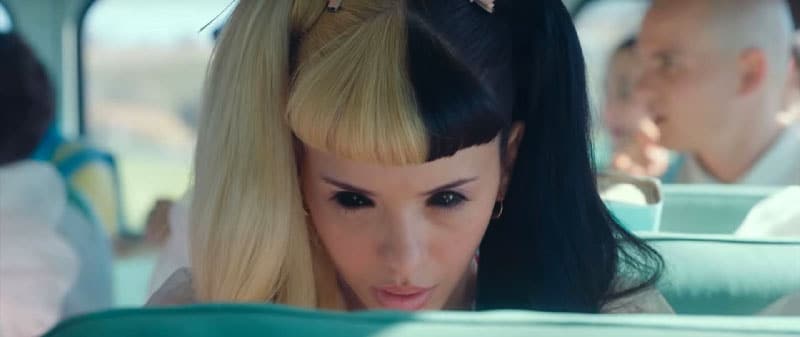
Whenever something goes wrong, Cry Baby and her friends call upon their magical powers to fight back. This is represented by blackened eyes, a symbol that is now all across mass media.
In the first scenes of the movie, we see that Cry Baby has magical powers. She also talks about an angel who spoke to her in a dream. She says:
“What was that angel’s name again? Was it Willy or Layla? No, I think it was Lilith.”
This name alone is extremely symbolic and provides important context for the rest of the movie. Indeed, Lilith is an archetypal “demoness” figure that is part of the lore of countless civilizations. In folk tales and religious texts, Lilith is identified as either Adam’s first wife, the serpent of the Garden of Eden and Satan’s bride.
“For 4,000 years Lilith has wandered the earth, figuring in the mythic imaginations of writers, artists and poets. Her dark origins lie in Babylonian demonology, where amulets and incantations were used to counter the sinister powers of this winged spirit who preyed on pregnant women and infants. Lilith next migrated to the world of the ancient Hittites, Egyptians, Israelites and Greeks. She makes a solitary appearance in the Bible, as a wilderness demon shunned by the prophet Isaiah. In the Middle Ages she reappears in Jewish sources as the dreadful first wife of Adam.
In the Renaissance, Michelangelo portrayed Lilith as a half-woman, half-serpent, coiled around the Tree of Knowledge. Irish novelist James Joyce cast her as the “patron of abortions.”
The ancient name “Lilith” derives from a Sumerian word for female demons or wind spirits—the lilītu and the related ardat lilǐ. The lilītu dwells in desert lands and open country spaces and is especially dangerous to pregnant women and infants. Her breasts are filled with poison, not milk. The ardat lilī is a sexually frustrated and infertile female who behaves aggressively toward young men.
In most manifestations of her myth, Lilith represents chaos, seduction and ungodliness. Yet, in her every guise, Lilith has cast a spell on humankind.”
– Janet Howe Gaines, Seductress, heroine or murderer?
In modern times, Lilith was reclaimed by feminist scholars who perceive her as a powerful female figure who rejected the authority of Adam and God to obtain freedom.
“According to feminist readers, Lilith is a role model for sexual and personal independence. They point out that Lilith alone knew the Ineffable Name of God, which she used to escape the Garden and her uncompromising husband. And if she was the proverbial serpent in the Garden of Eden, her intent was to free Eve with the power of speech, knowledge, and strength of will. Indeed Lilith has become such a potent feminist symbol that the magazine “Lilith” was named after her.”
– Ariela Pelaia, Lilith, from the Medieval Period to Modern Feminist Texts
The figure of Lilith also has strong historical connections with witchcraft as she is considered to be the “original witch”. In K-12, Cry Baby and her friends possess magical powers that are powered by Lilith.
In K-12, most of the bad guys are bad … guys. They represent the patriarchy and witchcraft is presented as an effective way of fighting back against it (the same exact message is found in the teen Netflix series Chilling Adventures of Sabrina).
Boys Bad
A major theme in K-12 is that men are bad and that they deserve to be punished. It is part of a new wave of radical feminism that does not seek equality, but revenge.
In the movie, most boys and men are portrayed as depraved jerks who (when they’re not eating glue) cannot help but shout textbook misogynistic things to girls. For instance, when Cry Baby asks to play the role of the President at the school play, a boy turns around and says:
Cry Baby’s answer is:
“Having a larger capacity to feel and express emotions is one of the qualities that make us superior to your kind”.
Her response basically says: “We’re not equal, we’re better than you”. What if I told you that sexes are not actually in competition and that they actually complete each other? Isn’t that beautiful? But that is not is being taught to children. It is all about filling them with hate and anger.
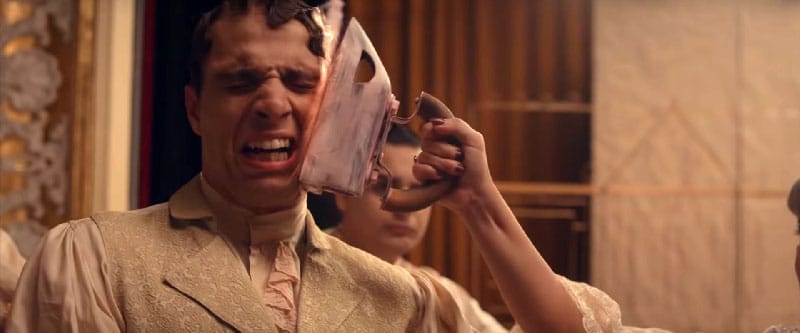
During the school play, Cry Baby goes off-script and uses her magic to burn this guy’s face using an iron – a symbol of female domestic oppression. The fact that this guy was not actually oppressing her, but playing a role does not seem to bother anyone.
In another scene, one of Cry Baby’s magical friends talks to herself as she is writing an essay. She says:
“A treatise on co-ed education. Boys are the problem.”
This benign scene that most people probably did not notice sums up the underlying lesson that is being taught to young girls through “entertainment”. Boys bad, hate good.
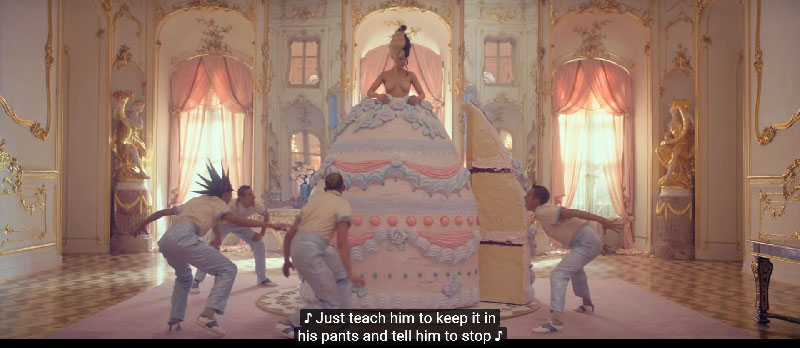
In Strawberry Shortcake, boys are depicted as savage, deranged animals who cannot “keep it in their pants”.
The main story is resolved through the symbolic taking down of the patriarchy.

Cry Baby saves everyone by shapeshifting into a girl named Lorelai who uses sex to deceive the principal’s son.
Like Lilith, the name Lorelai has heavy symbolic meaning. In German folklore, Lorelei is the name of a female siren whose beauty and songs causes sailors to wreck their ships and die.
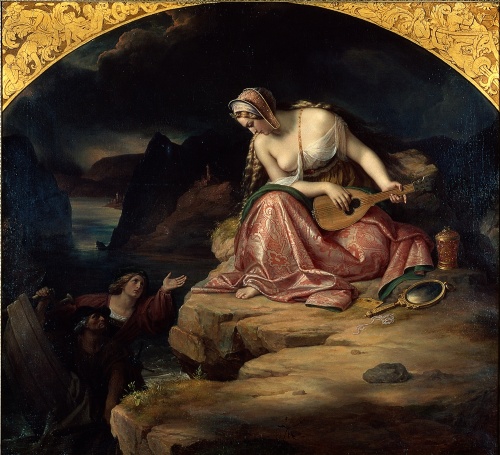
A 19th-century painting of Lorelei bewitching men into shipwreck by Germain painter Carl Joseph Begas.
Through the use of powerful symbols and historical references, K-12 tells a story of revenge against patriarchal tradition using witchcraft and female sexuality. While one may agree or not with this narrative, K-12 other themes that are difficult to agree with.
The Sexualization of Children
As seen above, a recurrent theme the works of Melanie Martinez is the combination of kiddie stuff with dark adult situations. In K-12, the sexualization of children is a prominent theme.
At the beginning of the movie, Cry Baby sings Wheels on the Bus, a song that is inspired by the quintessential children’s song of the same name. However, in Cry Baby’s version, things take a weird turn. She sings:
Counting trees as they pass me by
And I’m trying not to look across the aisle
‘Cause Maya’s letting Dan put his hand up her skirt
And she’s got her hand down his pants
Even worse, the bus driver is watching this. Cry Baby sings:
I know the driver sees it
I know he’s peeking in the rearview mirror
He says nothing
So the road to school begins with a bus driver that’s a creep and possibly a pedophile. That’s not a good start. As the girls get off the bus, they have a message to the bus driver.
Are these girls “sticking it” to the bus driver? Or are they actually giving him what he wants? Weird. And things get weirder.
Later in the movie, the song Teacher’s Pet talks about Cry Baby’s friend having a sexual relationship with her teacher. The chorus of the song says:
“I know I’m young, but my mind is well beyond my years”
That’s like a pedo’s fantasy.
The song is basically about the girl craving more attention from the teacher.
She said, “It’s for all the right reasons, baby
Don’t care ’bout grades, just call me your lady
If I pass this quiz, will you give me your babies?
Don’t call me crazy
You love me, but you won’t come save me
You got a wife and kids, you see them daily
Don’t know why you even need me”
Then things take a weirder turn: The teacher drugs the girl and attempts to … dissect her.

After being drugged by the teacher, Angelita shrinks down. The teacher then takes off her clothes and attempts to dissect her.
So what in God’s name is happening here? If the girl was clearly willing to do stuff, why did he even need to drug her? Because there’s a wider context to this child abuse stuff. It’s is part of Monarch programming. The scene is about the drugging of an MK slave to induce trauma through abuse.
To fully understand the twisted storyline of K-12, one must understand an important fact: The school is actually a mind-control programming site.
K-12: A Mind Control Programming Site
As seen above, Monarch Programming is an important recurring theme in the works of Melanie Martinez. The core narrative of K-12 is about children being sent to an MK programming site. There, Cry Baby is subjected to physical and sexual trauma in order to cause dissociation.
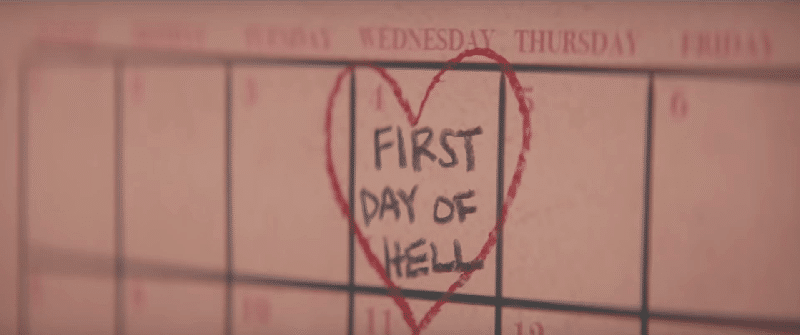
At the beginning of the movie, Cry Baby draws a heart around “First Day of Hell”. MK slaves are programmed to believe that their pain is good. Lilith will tell Cry Baby the same thing later in the movie.
In actual Monarch programming, children are often abducted from unfit parents.
Angelita, Cry Baby’s friend appears to also have a dark backstory. At one point she tells her friend:
– Il y a du sang partout.
– What does that mean?
– There’s blood everywhere. I don’t really know French. It’s just something I picked up as a kid. Had a French nanny.
Did her family get killed before she got abducted?
As Cry Baby goes through the grades at K-12, the viewers are treated with a heavy dose of blatant MK imagery. In Show and Tell, Cry Baby is portrayed as a literal puppet who sings about the music industry.
During the chorus, she sings:
“Art don’t sell
Unless you’ve f*cked every authority”
But Melanie Martinez’ art is selling … sooo … what is she saying?
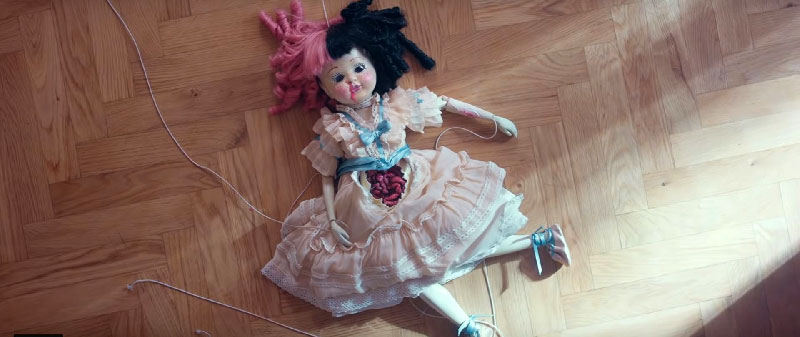
The performance ends with the puppet being thrown on the floor, with innards exposed. More trauma-based mind control.
Cry Baby is then taken out in a stretcher by evil nurses who drug her, leading her to a bad trip. Then things get full-on MKULTRA.
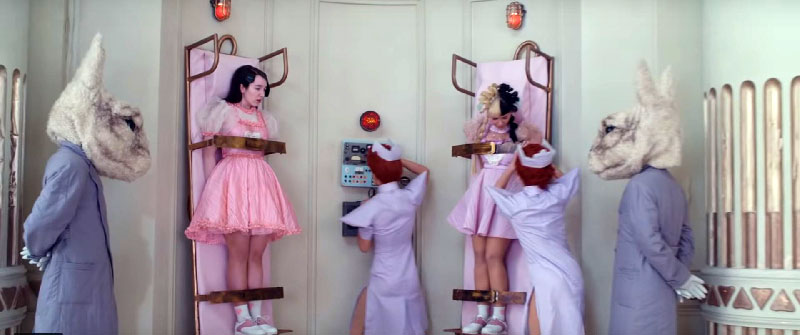
Cry Baby and Angelita are attached to some sort of machine (electroshock?) as white rabbits look over.
K-12 contains lots of references to Alice in Wonderland. Appropriately enough, this story about a young girl who escapes reality to enter Wonderland is a major programming script in actual Monarch programming. As slaves are subjected to intense trauma, they are told to “go to through the looking glass” and enter Wonderland to escape the pain – code for dissociation, the ultimate goal of Monarch programming.
In the fairytale, Alice follows a white rabbit to Wonderland. This is why there are lots of creepy white rabbits in K-12.
After all this abuse, Lilith appears to the girls who seek her help.
While the girls beg Lilith to take them with her, she tells them to stay there and endure more suffering. She tells them:
“We must feel the physical pain of this world because the only way that we can truly learn is through experience”.
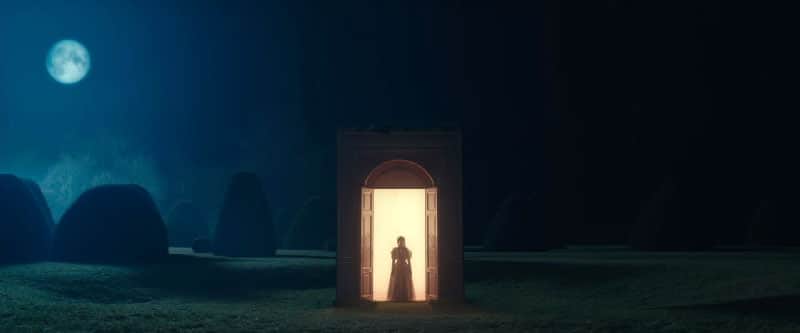
At the end of the movie, Lilith and her portal appear again. The girls finally go through the portal.
Considering the fact that the portal is a gateway to freedom and relief from suffering, it is most likely a metaphor for dissociation.
That means that Lilith is not truly liberating them, she is furthering their programming. That also means that all the “social” messages in the movie are not actually liberating, they’re furthering the viewer’s programming.
“That can’t be right! I need more proof!”

The one-eye sign sums the true message of the movie. Cry Baby’s quest for freedom is actually a road to more control by the occult elite.
In Conclusion
K-12 is in perfect continuation with Melanie Martinez’ previous works. Backed with a massive budget provided by Atlantic Records, K-12 hides, beneath layers of cute outfits and an orgy of pastel, a dark and deceptive story filled with powerful symbolism.
Released during the “back to school” time of the year, K-12 is another attempt at schooling children with the agenda of the occult elite. The same exact agenda can be found in other “teen” shows such as Chilling Adventures of Sabrina, which also bizarrely showcased the sexualization of children combined with the message that pseudo-satanism is the best way to fight the patriarchy.
In short, this is all about deception. While it pretends to address issues experienced by children, K-12 actually promotes their sexualization. While it pretends to promote love and acceptance, it actually promotes hate and division between sexes. While it pretends to champion freedom, it is actually a vehicle for social indoctrination.
And that is the only lesson that needs to be learned today. Class dismissed.
P.S. If you appreciated this article, please consider showing your support through a small monthly donation on Patreon. If you prefer, you can also make a one-time donation here. Thank you.
- Laser beam able to destroy targets at speed of light is tested from British army vehicle for first time
- New Fountain in Vienna Shows What Ruling Oligarchy Think of Us and Celebrates How They've Warped and Ruined Us
- Cartoon Network 'Mighty Magiswords' creator Kyle Carrozza arrested on child p**n charges
- Biden said this … and then something happened.
- BlackRock linked firm, Austin Private Wealth (APW), shorted Trump stock shortly before shooting.
- They don't even hide anymore …
- Global IT meltdown show perils of cashless society
Get an e-mail notification as soon as a new article is published on The Vigilant Citizen.
-
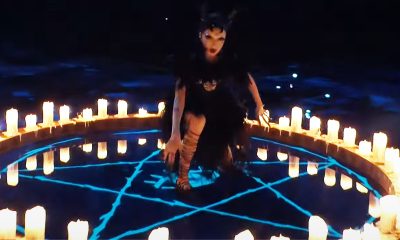
 Movies and TV2 months ago
Movies and TV2 months agoThe Eurovision 2024 Finale Was Basically a Demonic Ritual
-

 Pics of the Month2 months ago
Pics of the Month2 months agoSymbolic Pics of the Month 05/24
-

 Latest News3 months ago
Latest News3 months agoBeyond Rap Beef: Kendrick Lamar’s Dark Accusations Against Drake (Including Sex Trafficking)
-

 Movies and TV3 months ago
Movies and TV3 months ago“American Horror Story: Delicate” and its Messages About Hollywood’s Occult Underbelly
-

 VC Resources1 month ago
VC Resources1 month agoThe True Meaning of the Inverted Cross and Why Mass Media Lies About It
-

 Latest News3 weeks ago
Latest News3 weeks agoBiden’s Debate Performance Was Shocking Proof That He’s Merely a Puppet. Who Actually Runs the Country?
-

 Latest News2 months ago
Latest News2 months agoBilderberg 2024 or How the Elite Subverts Politics, Technology, Big Pharma and the Media
-

 Movies and TV1 month ago
Movies and TV1 month agoThe Much-Overlooked Symbolism in Roman Polanski’s “The Ninth Gate”



